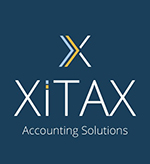The self-employed have historically paid two classes of National Insurance – Class 2 and Class 4. However, this is set to change from April 2024 with the abolition of Class 2 National Insurance contributions.
What are Class 2 contributions?
The payment of Class 2 contributions has enabled a self-employed person to build up entitlement to the state pension and contributory benefits.
Class 2 contributions are flat-rate weekly contributions payable where profits from self-employment exceed the lower profits threshold, set at £12,570 for 2023/24. The threshold is aligned with the personal allowance and the lower profit limit applying for Class 4 purposes.
Where profits fall between the small profits threshold (set at £6,725 for 2023/24) and the lower profits threshold, a self-employed earner is treated as having paid Class 2 contributions at a zero rate, thereby earning a qualifying year without actually having to pay any National Insurance.
A self-employed earner whose profits are below the small profits threshold is not liable to pay Class 2 National Insurance contributions, but can make voluntary contributions if they choose in order to maintain their state pension record. This is a much cheaper option than paying Class 3 contributions.
The abolition of Class 2 contributions has been a long time coming. Class 2 contributions were to have been abolished and Class 4 contributions reformed with effect from 6 April 2019 (having already been delayed a year). Following a U-turn, the reforms were put on hold as a result of concerns that self-employed earners with low earnings would lose out. However, the introduction of the lower profits threshold and a deemed zero rate on contributions between the small profits threshold and lower profits threshold has addressed this issue, paving the way for the abolition of Class 2 contributions.
Class 4 contributions
Class 4 contributions are profit-related contributions payable by self-employed earners. Contributions are payable at the main Class 4 rate on profits between the lower profits limit and the upper profits limit, and at the additional Class 4 rate on profits in excess of the upper profits limit.
For 2024/25, the lower profits limit is £12,570 and the upper profits limit is £50,270, unchanged from 2023/24 and due to remain at this level until 5 April 2028.
For 2024/25, the main Class 4 rate is 8%, having been reduced from 9%. The additional Class 4 rate is 2%.
Building up pension entitlement for 2024/25 and beyond
With the abolition of Class 2 National Insurance contributions from 6 April 2024, self-employed earners will for 2024/25 onwards build up entitlement to the state pension and contributory benefits where their earnings exceed £12,570. This is the point at which Class 4 contributions become payable.
However, self-employed earners with profits between £6,725 and £12,570 for 2024/25 will receive a National Insurance credit, earning them entitlement to the state pension and contributory benefits, despite not paying any National Insurance.
For 2024/25, self-employed earners with profits of less than £6,725 will still be able to make voluntary contributions at the 2023/24 Class 2 rate of £3.45 per week. This will be much cheaper than paying Class 3 voluntary contributions, which are to remain at £17.45 per week for 2024/25.

